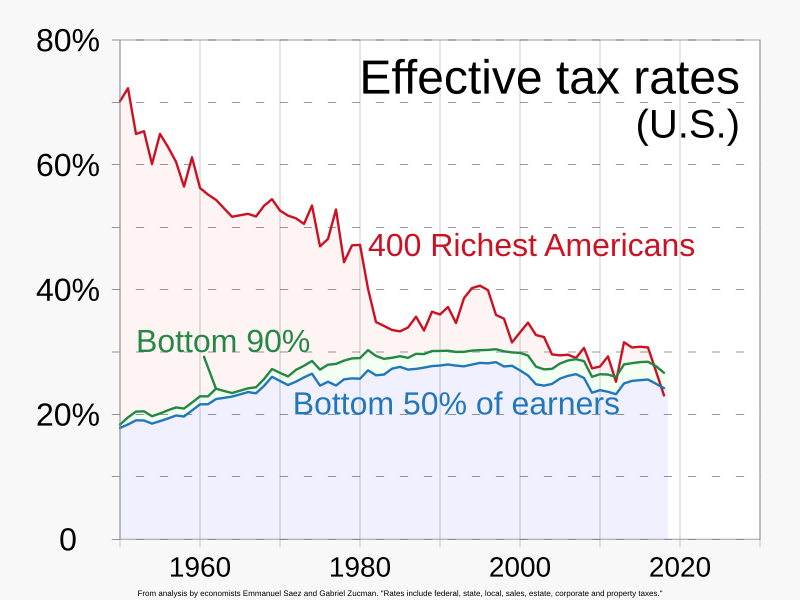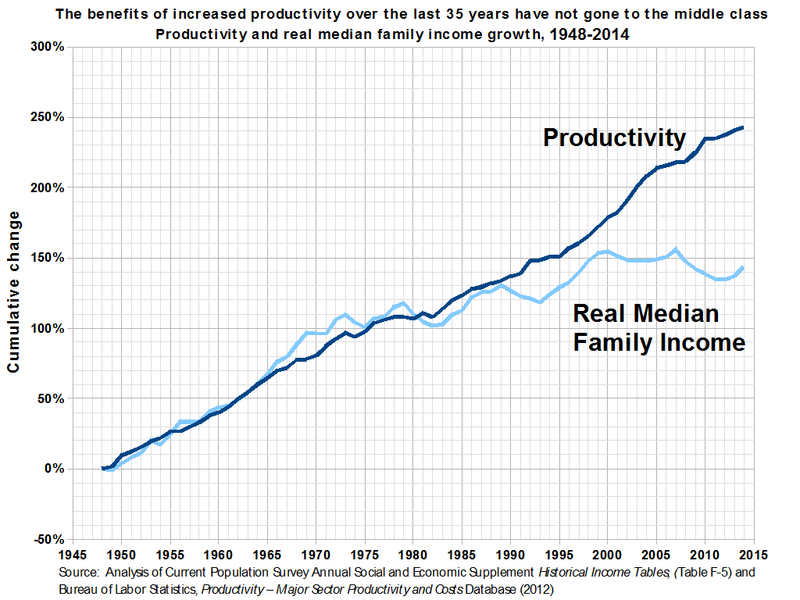Recently, a friend of mine remarked on the fact that Americans are disillusioned with Democrats, despite the fact that the US economy is doing splendidly well.
It is true. The productivity of the US economy is nothing short spectacular.
Trouble is… it’s not helping families. This Wikipedia chart tells the story (though there are many other, similar charts, comparing family wealth, incomes, and other measures of inequality).
What this chart tells us is that the living standards of typical American families have been stagnant for a quarter century or more. No matter what they do, they are stuck. Their lives are not getting any better, even as America produces one billionaire after another, with some of them, like Musk, predicted to become trillionaires within the next decade or two.
Yes, American voters are concerned about the economy. But the economy they’re concerned about is not the economy that is reflected by macroeconomic statistics like GDP growth. They are concerned about the economies of their own families. What they can afford. Can they buy a house. Can they replace an aging vehicle.
And increasingly, they cannot. Median family wealth is stagnant while housing prices rise. Tuition fees rise, along with student debt. Things are not getting any better, and in particular, parents cannot promise their children a life better than their own.
This is a hotbed for populism, of course. They sound the battle cry: Kick out those immigrants! Erect trade barriers! Lower those taxes! Well, guess who benefits when that happens:

After all, when the bottom half of Americans are not doing well, the perfect solution is to lower the taxes for tycoons and captains of industry, right? Because of… I don’t know, trickle down? Or just blame yourself for your own misfortune?
So well, yes, it’s the economy, stupid. But make sure you read the right economic statistics. The numbers that actually reflect the realities of life of most Americans.
